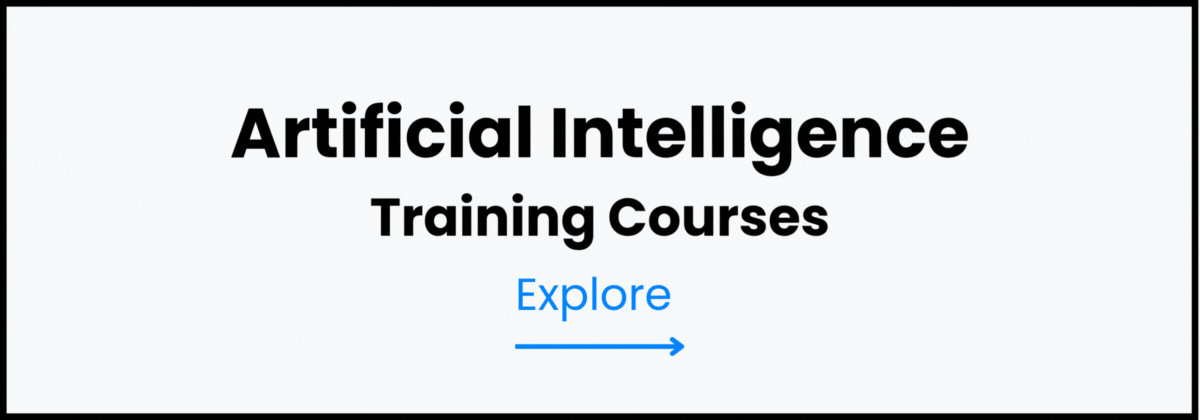How is AI Used In Enterprise Risk Management (ERM)?
The Role of AI in Enterprise Risk Management (ERM) and Forecasting
In today’s volatile business environment, The Role of AI in Enterprise Risk Management (ERM) and Forecasting has become central to how organizations anticipate threats, strengthen resilience, and make confident strategic decisions. As companies manage larger data volumes, heightened regulatory expectations, and fast-emerging risks, AI is transforming traditional risk management into a predictive, agile, and intelligence-driven discipline. Boards, risk leaders, and executives increasingly recognize that modern ERM must evolve beyond manual assessments and historical reporting—toward real-time, automated, and insight-powered oversight.
Enterprise Risk Management (ERM) provides a structured approach to identifying, assessing, and mitigating risks that could impact strategic objectives. Its purpose is to ensure that organizations understand their risk exposure, prioritize key vulnerabilities, and build frameworks that protect long-term value. However, the growing complexity of operational, financial, cybersecurity, and geopolitical risks has exceeded the limits of human-only judgment and traditional workflows.
This rise in data complexity, coupled with rapidly evolving threat landscapes, makes AI essential. Artificial intelligence can process vast datasets, identify hidden patterns, and flag early signals of potential disruptions that conventional models often miss. With machine learning, predictive analytics, and real-time monitoring, AI strengthens ERM by shifting organizations from reactive risk response to proactive, scenario-driven planning. ➡️(Artificial Intelligence (AI) Training Courses)
AI’s ability to deliver predictive, proactive, and data-driven risk oversight marks a major step forward in enterprise risk maturity. Whether forecasting emerging risks, analyzing interdependent threats, or improving response speed, AI enables risk teams to operate with sharper intelligence and greater certainty. This empowers organizations to navigate uncertainty with confidence and build risk strategies that are resilient, future-focused, and aligned with long-term business goals.
Key Applications of AI in Enterprise Risk Management
AI is reshaping Enterprise Risk Management by enhancing accuracy, increasing speed, and providing deeper visibility into organizational threats. Breaking down its applications into clear categories helps illustrate how AI brings intelligence and adaptability to every stage of the risk cycle.
-
Predictive Risk Forecasting Using Machine Learning
AI risk forecasting allows organizations to anticipate threats before they escalate into critical disruptions. Machine learning models analyze historical and real-time data to identify patterns, correlations, and anomalies that signal emerging risks. By detecting these signals early, companies gain the ability to respond proactively rather than reactively.
Practical applications include:
- Forecasting market volatility based on economic indicators and trading trends
- Fraud detection through behavioral analytics and transaction monitoring
- Cybersecurity forecasting that predicts possible attack vectors and vulnerability exploitation
Through predictive analytics for risk, organizations build stronger resilience and make more informed decisions about future scenarios.
-
Real-Time Risk Monitoring and Early Warning Systems
Modern risk environments require continuous oversight, and AI delivers this through real-time risk monitoring capabilities. AI systems track operational, financial, and compliance data streams 24/7, detecting shifts that may indicate rising threats.
Core features include:
- Automated alerts when anomalies appear in transaction flows, network activity, or compliance metrics
- Escalation mechanisms that notify the right stakeholders instantly
- AI early warning tools that forecast potential breakdowns in critical processes
This continuous monitoring allows organizations to act immediately, reducing the likelihood and impact of high-risk events.
-
Enhanced Credit, Financial, and Market Risk Analysis
AI brings precision and speed to financial risk assessments. Banks and corporates rely on AI in financial forecasting to analyze cash flow patterns, evaluate creditworthiness, and model financial performance under various economic scenarios.
AI-driven credit risk models deliver:
- More accurate scoring by analyzing alternative and nontraditional data
- Early identification of liquidity risks or deteriorating credit profiles
- Market risk simulations that test portfolios against potential shocks
These credit risk AI models help institutions make informed lending decisions and protect financial stability.
-
Operational Risk Identification and Process Automation
Operational risk is often hidden in day-to-day activities, but AI excels at uncovering inefficiencies and failures. By analyzing process flows, workforce patterns, and system behavior, AI in operational risk identifies bottlenecks, errors, and emerging vulnerabilities.
Applications include:
- Detecting process failures in manufacturing, logistics, or service delivery
- Monitoring staff productivity to identify workforce-related risks
- Using RPA (Robotic Process Automation) to automate repetitive tasks and reduce human error
These risk automation tools strengthen internal controls and improve operational resilience.
-
AI for Cybersecurity and Technology Risk Management
As cyber threats grow more sophisticated, AI provides organizations with advanced defenses. AI cybersecurity risk tools monitor networks, detect anomalies, and flag suspicious activity in real time, improving the speed and accuracy of threat detection.
Key capabilities include:
- Identifying intrusion attempts through behavioral analytics
- Using digital risk intelligence to monitor attack surfaces
- Detecting system vulnerabilities before they are exploited
AI makes technology risk management more proactive, protecting digital assets and business continuity.
-
Strategic & Reputational Risk Forecasting
Strategic and reputational risks can emerge quickly from public perception, global events, or competitor activity. AI helps forecast these risks by analyzing sentiment trends, geopolitical developments, and external signals.
AI strengthens foresight through:
- Tracking public sentiment across social media and news platforms
- Predicting reputational threats based on consumer behavior patterns
- Monitoring geopolitical shifts that may impact supply chains or market stability
Through strategic risk forecasting and AI in reputational risk, organizations are better equipped to navigate uncertainty and protect brand integrity.

Benefits of AI in ERM and Forecasting
Integrating AI into Enterprise Risk Management delivers a wide range of AI risk management benefits that significantly strengthen an organization’s ability to detect, interpret, and respond to threats. By combining intelligent analytics with continuous monitoring, AI helps risk leaders and boards operate with greater accuracy, speed, and strategic clarity. These capabilities elevate data-driven ERM and ensure that decisions are supported by reliable, real-time insights.
Key benefits include:
- Faster threat detection:
AI continuously scans operational, financial, and cybersecurity data to identify early warning signs long before traditional methods would notice them. - Higher prediction accuracy:
Machine learning models analyze large, complex datasets to produce reliable forecasts that outperform manual assessment techniques. - Data-driven strategy and oversight:
AI transforms raw data into actionable insights, enabling boards and executives to make informed decisions based on real evidence rather than assumptions. - Improved resource allocation:
AI highlights the highest-risk areas, allowing organizations to focus time, budget, and personnel where they matter most. - Advanced scenario planning:
Predictive simulations help leaders assess multiple future outcomes, evaluate vulnerabilities, and prepare for best-case, worst-case, and probable scenarios. - Proactive decision-making:
With real-time insights, organizations move from reactive responses to proactive, well-planned risk mitigation strategies.
These benefits collectively improve risk maturity, strengthen forecasting accuracy, and help organizations stay resilient in a rapidly evolving risk landscape.
Important Resources:
- Role of AI in Corporate Governance
- What Is Anti-Money Laundering (AML)?
- Principle of Accountability in Corporate Governance
- What Is BRM in Corporate Strategy
- Key Steps for Successful AI Implementation
- How AI Is Changing the Recruitment Process
Limitations of AI in ERM
While AI enhances risk visibility and forecasting accuracy, it also introduces significant challenges that require strong AI governance and careful oversight. Balancing innovation with caution ensures that organizations use AI responsibly and avoid unintended consequences. Below are the core limitations to consider:
-
Algorithmic bias and inaccurate predictions:
AI models depend on historical data, and if that data includes biases or gaps, the system may generate misleading insights. This creates ethical AI risk and can distort decisions in areas like credit scoring, fraud detection, and operational risk assessments.
-
Black-box models with limited transparency:
Many advanced AI models do not clearly explain how they reach their conclusions. This lack of visibility complicates audits, regulatory compliance, and trust in outputs—making model risk management a critical priority.
-
Overreliance on automation without human judgment:
Depending too heavily on AI can lead to decisions that miss context, nuance, or qualitative factors. Human expertise must remain central to evaluating risk, validating predictions, and interpreting complex scenarios.
-
Data privacy and regulatory concerns:
AI requires access to large volumes of sensitive data, increasing exposure to privacy breaches and compliance challenges. Inadequate controls around data usage, storage, and access can create significant legal and reputational risks.
-
Operational and implementation risks:
Deploying AI systems introduces new risks, such as integration issues, technical failures, incorrect configurations, or outdated models that produce unreliable results.
By understanding these limitations upfront and embedding strong governance controls, organizations can harness AI’s power while maintaining trust, accountability, and ethical integrity across the ERM framework. ➡️(AI Governance, Risk and Compliance Course)
Frequently Asked Questions (FAQs)
-
How is AI used in enterprise risk management?
AI enhances ERM by analyzing large datasets, detecting early warning signs, and automating repetitive tasks. It supports predictive analytics, real-time monitoring, and automated reporting, enabling risk teams to identify threats faster and respond more effectively. This helps organizations shift from reactive assessments to proactive risk oversight.
-
What is AI-based risk forecasting?
AI-based risk forecasting uses machine learning models and predictive analytics tools to anticipate future risks based on historical and real-time data. These models identify patterns, correlations, and anomalies that may signal financial, operational, or market disruptions. The insight allows companies to prepare for potential scenarios before they escalate.
-
Why is AI important for ERM?
AI significantly improves the accuracy and speed of risk assessments. It provides data-driven insights that strengthen decision-making and reduces the chance of human error in critical risk processes. By automating monitoring and analysis, AI helps organizations maintain continuous oversight and develop more agile, informed risk strategies.
-
What types of risks can AI predict?
AI can forecast a wide range of threats, including financial risks, operational failures, cybersecurity attacks, fraud, supply chain disruptions, market volatility, and strategic or reputational challenges. Its ability to process vast datasets makes it effective at identifying complex, interdependent risk patterns.
-
Does AI replace human risk managers?
No. AI does not replace human risk managers—it enhances their capabilities. While AI automates analysis and detection, human judgment remains essential for interpreting insights, evaluating context, and making final decisions. AI serves as an augmentation tool that strengthens expert oversight rather than substituting it.
-
What challenges should companies consider before adopting AI?
Organizations must be aware of challenges such as algorithmic bias, lack of transparency in AI models, data quality issues, and the need for strong governance frameworks. Compliance, privacy standards, and regulatory requirements must also be addressed to ensure responsible implementation and trustworthy risk analysis.
-
How do organizations start implementing AI for ERM?
Companies typically begin by establishing a data governance framework, evaluating system readiness, and identifying high-impact pilot use cases—such as fraud detection or real-time monitoring. Once initial success is demonstrated, organizations can scale AI across more risk functions, supported by clear governance policies and continuous model validation.
Explore Courses From Our Top Categories:
Leadership Training Courses – Human Resources Training Courses – GRC Training Courses – Risk Management Training Courses – Finance & Budgeting Training Courses – Training Courses in Dubai





